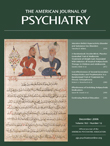I often walk down a hallway of the Denver VA Medical Center where an inexpensive reproduction of Vincent Van Gogh’s Sunflowers hangs. My eyes have roamed over the reproduction many times in the years I have worked there, just as many of you have seen it and not seen it many times in public settings as well. I had not realized that the painting was first hung by Vincent as a welcoming decoration in a bedroom that he had prepared for Paul Gauguin. Ten steps further I passed one of Gauguin’s South Sea tableaus, whose figures include a woman who looks very much like his portrait of Madame Roulin. Gauguin and Van Gogh painted her side by side in a single sitting at the Yellow House in Arles in southern France, where they shared quarters for nine weeks. Vincent had requested that the house be painted yellow, a color that would dominate the paintings that he completed during the months in Arles. He invited Gauguin, because he hoped that they could start a new artists’ workshop there that would become a nidus of creativity outside the established Parisian art world.
Martin Gayford describes the remarkable nine weeks that they spent there together, the final weeks of the first major productive period of Van Gogh’s artistry, with paintings that include the Chair, the Sower, Madame Roulin, Monsieur Ginoux, and La Berceuse . Both he and Gauguin painted daily, working side by side, generally painting the same scene or model or each other. Both wrote several times per week to Theo Van Gogh, Vincent’s brother and Gauguin’s agent, about Vincent’s deteriorating mental state. The night that Gauguin moved out because he could no longer tolerate Vincent’s irritability, Vincent cut off part of his own ear and presented it to a prostitute at a brothel that both of them had visited regularly together. When Gauguin returned in the morning to the Yellow House to retrieve the rest of his belongings, the police summoned by the brothel owner were outside and arrested him for Vincent’s murder. Gauguin insisted on going upstairs to the bedroom, where they found Vincent alive, in a fetal position, and took him to a mental hospital. After a brief hospitalization, Vincent returned to the Yellow House alone to paint the Self Portrait with Bandaged Ear .
The title characterizes the 9 weeks as turbulent, but they began with Sunflowers’ euphoria and only at the end descended into madness and the Bandaged Ear, probably the two most famous paintings from that period. Gayford formulates bipolar disorder, mixed-type with rapid cycling with DSM-IV-like precision, based on Gauguin’s descriptions. But he uses Vincent’s own words to conclude that he did not paint because he was mad; rather, he painted to keep from being mad. When his work was grounded in objects, landscape, and people, his art was vibrant. But when he tried to paint Madame Roulin from memory ( de tête ) as La Berceuse, a woman in French folk tradition who rocks the infant Christ, he became overwhelmed. Gauguin was simultaneously painting his own mother de tête whose face would become Exotic Eve when he moved to Tahiti. Vincent turned to alcohol to calm himself, which provoked the irritability that drove Gauguin away and resulted in his own psychosis. Gauguin had challenged him to paint de tête, but Vincent himself had feared losing reality and told Theo that he would rather be a shoemaker than become a “musician of color.” Vincent’s illness remitted for a while, and many of his greatest works lay ahead of him, but his future painting, beginning with the Church at Auver and continuing through Starry Night, would be in cobalt blue. Gauguin, on the other hand, would paint his Yellow Christ the following year, a crucified Christ in a field in Brittany with a yellow background.
This book, by a London art critic, is ideal for psychiatrists because Gayford lets Vincent and Gauguin speak extensively for themselves, both in their words and in their paintings. His psychiatric formulation is only a few brief pages at the end and not the least intrusive. The question of whether lithium carbonate would have blocked Van Gogh’s creative output is appropriately labeled as speculation. More space is devoted to barium oxide, which Gauguin and Van Gogh used as an unfortunate choice of underlayer that allowed the paint to flake off. I was initially disappointed that the 59 illustrations were not in color, but the artists themselves regularly corresponded in detail about the colors of their paintings, with only occasional pen and ink sketches to convey their message. Indeed, it was good to imagine and remember ( de tête ) the paintings as I have seen them in museums, rather than to be tied to the pale reproductions that haunt VA hallways.

